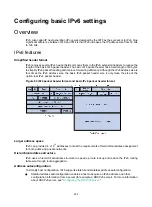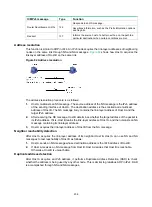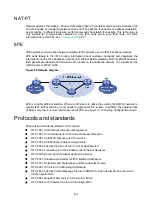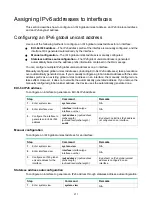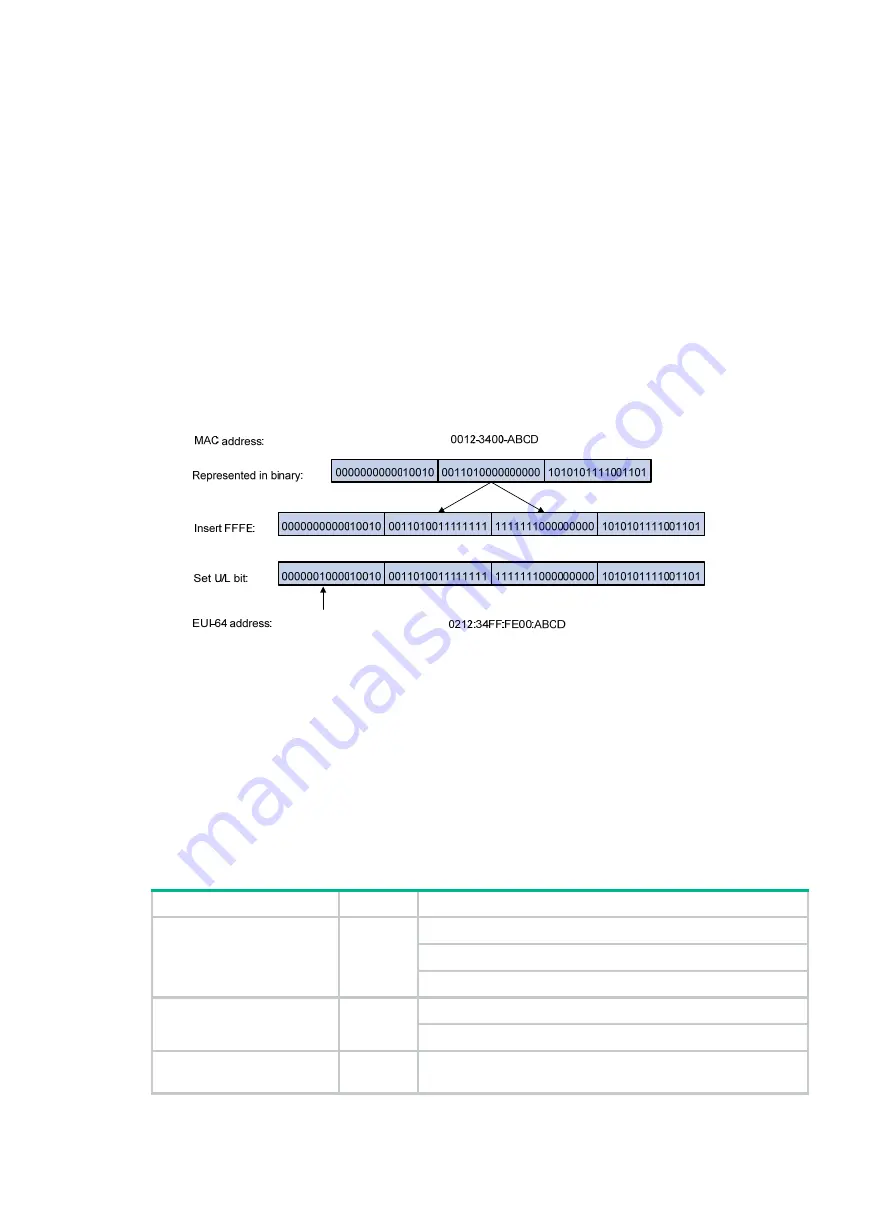
205
duplicate addresses. Each IPv6 unicast or anycast address has a corresponding solicited-node
address. The format of a solicited-node multicast address is FF02:0:0:0:0:1:FFXX:XXXX.
FF02:0:0:0:0:1:FF is fixed and consists of 104 bits, and XX:XXXX is the last 24 bits of an IPv6
unicast address or anycast address.
EUI-64 address-based interface identifiers
An interface identifier is 64-bit long and uniquely identifies an interface on a link. Interfaces generate
EUI-64 address-based interface identifiers differently.
•
On an IEEE 802 interface (such as an Ethernet interface and a VLAN interface)
—The
interface identifier is derived from the link-layer address (typically a MAC address) of the
interface. The MAC address is 48-bit long.
To obtain an EUI-64 address-based interface identifier, follow these steps:
a.
Insert the 16-bit binary number 1111111111111110 (hexadecimal value of FFFE) behind
the 24th high-order bit of the MAC address.
b.
Invert the universal/local (U/L) bit (the seventh high-order bit). This operation makes the
interface identifier have the same local or global significance as the MAC address.
Figure 81 Converting a MAC address into an EUI-64 address-based interface identifier
•
On a tunnel interface
—The lower 32 bits of the EUI-64 address-based interface identifier are
the source IPv4 address of the tunnel interface. The higher 32 bits of the EUI-64 address-based
interface identifier of an ISATAP tunnel interface are 0000:5EFE, whereas those of other tunnel
interfaces are all zeros. For more information about tunnels, see "
•
On an interface of another type (such as a serial interface)
—The EUI-64 address-based
interface identifier is generated randomly by the device.
IPv6 ND protocol
The IPv6 Neighbor Discovery (ND) protocol uses the following ICMPv6 messages:
Table 9 ICMPv6 messages used by ND
ICMPv6 message
Type
Function
Neighbor Solicitation (NS)
135
Acquires the link-layer address of a neighbor.
Verifies whether a neighbor is reachable.
Detects duplicate addresses.
Neighbor Advertisement
(NA)
136
Responds to an NS message.
Notifies the neighboring nodes of link layer changes.
Router Solicitation (RS)
133
Requests an address prefix and other configuration information
for autoconfiguration after startup.












